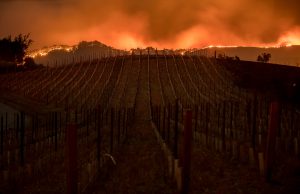Ribera del Duero
Ribera del Duero is known to be one of the most important wine regions in Castilla y Leon which is located in northern Spain. Its reputation is primarily due to the high quality of red wines produced predominantly from Tempranillo grapes with some of the best examples renowned throughout the wine world. The quality of the regions red wines wouldn’t be as it is without these grapes.
Ribera del Duero was not awarded Denominación de Origen status until 1982 which is substantially late considering the vast history of the winemaking region centered on the leading local producer, Bodegas Vega Sicilia (founded in 1864). The quality of Vega Sicilia inspired the move but not put forward by the legendary winemaking estate. Robert Parker, who took a liking to Pesquera and Ribera del Duero, was the one instrumental in the move as you could expect this not only put Ribera del Duero and Pesquera on the map but launched them to world stardom. The wine produced here is considered so good that it is often used for royal events within the country, with its Unico wine regarded as the greatest of Spain.
Focusing on red
Award-winning brands such as Vega Sicilia and Tinto Pesquera saw success like other wines have not in the region; thus started a small revolution turning local producers away from bulk rosé and co-operatives. The producers turned their eyes to quality reds as a great alternative. Other prominent producers such as Dominio de Pingus and Emilio Moro also started to create esteemed wines.
Ribera del Duero is now almost entirely devoted to the production of red wine with Tempranillo (known locally as Tinto Fino), as the most commonly planted grape variety. The true quality of the reds now produced here is incredible. The top examples will be deeply colored, with firm tannin structure to create complex aromas of dark fruit and are known to develop beautifully over time, increasing in complexity over the years. Digging deep into the roots of red winemaking and having almost complete focus on the grapes required is what has been needed and subsequently what has been done to achieve this. However, still today not all wines produced in the region are red.
Denominación de Origen regulations stipulate that Tempranillo must make up a minimum of 75 percent of all vinos tintos, meaning red wines. There is still a moderate level of whites’ produced, though the balance is usually made up of mostly Malbec, Merlot and Cabernet Sauvignon. Vega Sicilia introduced these varieties over one hundred years ago and have since continued to use them to this day.
Climate impacts
Ribera del Duero is located in the Iberian Peninsula at around 2800 feet above sea level. The name is Spanish for “bank of the Duero” due to the river dividing the region. This river is vital in supplying the water that the vineyards need to thrive. The region follows this course of the Duero river for around 115km upstream from Valladolid before then traversing into Portuguese growing areas.
During the day the region bakes in high temperatures with the nights cooling down. Such a divide in temperatures leads the climate to assist in offering the optimum accumulation of aromas, flavors, and complexities within the grapes. The soils are credited alongside the waters and temperatures for adding complexity to the grapes and character; this originates from the variation in the soil comprising of layers of limestone, marl, and chalk.
Aging
Aging requirements match that of the Rioja denomination, Crianza red wines must be matured for at least two years, 12 months of which must be in oak. There are plenty of variations in times spent in oak and developing, including Reserva wines which require three years aging, one must be in oak. Finally, Gran Reserva wines have to be aged for five years of which two should be in oak before they can be released. This specific aging requirement offers character to form within the wine and from the oak of the barrels used.
The wines are classified as much for their longevity as they are for grape quality following the above process Ribera del Duero has proven to produce some very well-aging wines. With combination of exceptional grape quality and very well aged wines, Ribera del Duero has seen massive success for its wines produced. This has been the case since the 19th century but with the recent (1982) DO classification, it has seen this popularity sore.
Culture
In the early 80’s when the classification was given, only 14 estates existed in Ribera del Duero; now there are more than 300, an incredibly substantial increase in such a short space of time. Whether the expansion to this extent is a good thing is debatable, however, what is known is that the quality of some of the reds leaving these estates is of exceptional quality, with intriguing definition and finesse. On the other hand, dubious oaks used on some productions have obscured some of the purity from the fruit lending itself to lesser quality wine.
In a surprising yet remarkable move by the Alvarez family, founding the Alion estate (a younger brother of Vega), this has laid the foundations for a more sophisticated approach culminated in an entirely new and modern Ribera estate. Setting new standards in the industry with advanced technology, all while keeping the legendary status of Vega out of the picture in an estate of its own.
One thing is for sure, and there is nothing dubious about it, Ribera reds are and as far as most people are concerned always will be the perfect accompaniment to the region’s signature dish of lechal al horno, meaning, lamb slow-roasted in an open oven, even the thought makes the mouth water. The combination which is a must-try gives French alternatives a run for their money.







